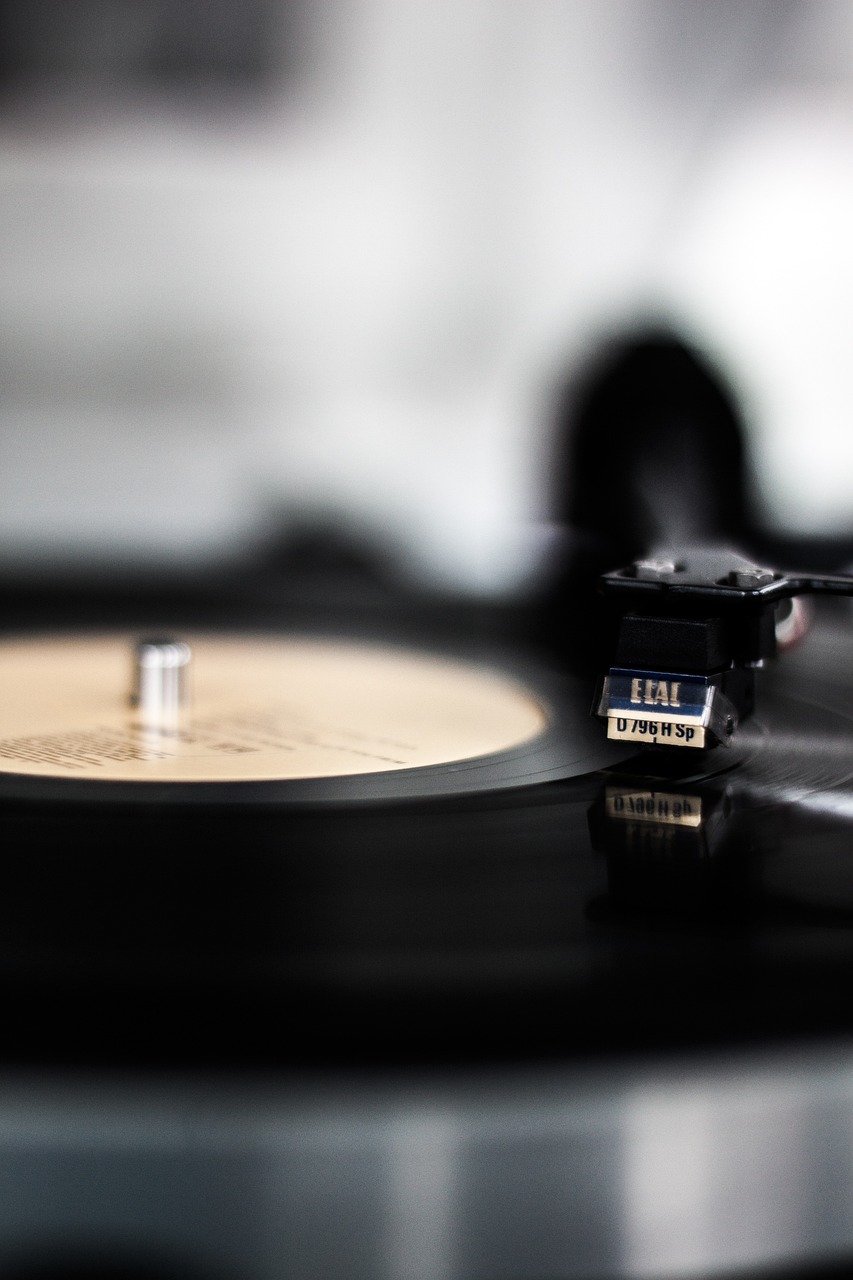Have you ever wondered about the incredible power that lies within a simple tool like a microphone? Let’s explore the wide array of possibilities and opportunities that a microphone brings to the table. From hosting your own podcast and conducting captivating interviews to creating and editing impactful audio content, the possibilities are endless. So, grab your microphone, and let’s uncover the extraordinary ways in which this device can transform your audio world. Whether you’re a seasoned podcaster or just starting out, prepare to be amazed by the incredible capabilities of a microphone.
Fundamentals of Microphone
What is a Microphone
A microphone is a device used to capture sound waves and convert them into electrical signals that can be amplified or recorded. It is an essential tool in various industries such as music, broadcasting, podcasting, education, healthcare, corporate settings, and the film industry. Without microphones, many of our modern audio-related activities would not be possible.
Different Types of Microphones
There are several different types of microphones, each with its own unique characteristics and applications. The most commonly used types include dynamic microphones, condenser microphones, ribbon microphones, and lavalier microphones.
Dynamic microphones are known for their durability and versatility, making them suitable for live performances and recording loud sound sources. Condenser microphones, on the other hand, offer a higher level of sensitivity and accuracy, making them ideal for studio recording and capturing subtle nuances in sound. Ribbon microphones are popular for their warm and vintage sound characteristics, often used in broadcasting and professional studios. Lavalier microphones, also known as lapel microphones, are small and discreet, commonly used in broadcasting, interviews, and public speaking engagements.
How Does a Microphone Work
Microphones work by converting sound waves into electrical signals through the use of a diaphragm, a coil or capacitor, and a magnet. When sound waves hit the diaphragm, it vibrates, causing the coil or capacitor to move in relation to a magnet. This movement generates an electrical current that represents the sound waves. The electrical signal produced by the microphone can then be amplified or recorded for various purposes.
Microphone in Music
Microphones in Recording Studios
In recording studios, microphones play a crucial role in capturing the authentic sound of instruments, vocalists, and other sound sources. Each microphone is carefully selected based on the desired tonal qualities and characteristics that best complement the recording. Whether it’s capturing the raw power of a rock band or the delicate nuances of a classical orchestra, the right microphone choice is essential in achieving high-quality recordings.
Live Performance Usage of Microphones
Microphones are indispensable in live performances, allowing performers to amplify their voices and instruments to reach a wider audience. From small intimate venues to large stadiums, microphones enable performers to connect with their audiences and deliver an unforgettable experience. Wireless microphones, in particular, provide freedom of movement, allowing performers to engage with the crowd while maintaining excellent sound quality.
Impact of Microphone Technology on Music Industry
Advancements in microphone technology have revolutionized the music industry. With the development of high-quality condenser microphones, recording studios can capture every detail and nuance of a performance more accurately than ever before. Additionally, the introduction of wireless and portable microphones has opened up new possibilities for live performances, making it easier for artists to engage with their fans on and off the stage. Microphone technology continues to evolve, driving innovation and pushing the boundaries of what is possible in music production.

Use of Microphone in Broadcast Media
Radio Broadcasting and Microphones
Microphones are at the heart of radio broadcasting, allowing hosts, DJs, and guests to share their voices and deliver content to listeners around the world. Radio microphones are designed to provide clear and consistent audio transmission, ensuring that every word is heard with clarity. From talk shows to music programs, microphones are essential tools in capturing and broadcasting quality radio content.
News Reporting with Microphones
Journalists and news reporters heavily rely on microphones to capture interviews, press conferences, and on-location reporting. Portable microphones equipped with noise cancellation technology ensure that the audio captured remains clear and intelligible, regardless of the surrounding environment. The microphone acts as an interface between the reporter and their audience, ensuring that important news and information are effectively communicated.
Role of Microphones in Sports Broadcasting
In sports broadcasting, microphones play a vital role in capturing the excitement and atmosphere of live events. Whether it’s capturing the roar of the crowd, the commentary of the announcers, or the on-field sounds, microphones give viewers an immersive experience. Wireless microphones are often used to capture audio from coaches, referees, and athletes, providing real-time insights and enhancing the overall viewing experience.
Microphones in Podcasting
Podcasting Basics and the Importance of a Microphone
Podcasting has gained immense popularity in recent years, allowing individuals and organizations to create and share audio content on various topics. A high-quality microphone is essential for podcasting, as it directly impacts the audio clarity and overall production value. Listeners appreciate podcasts with clear and professional-sounding audio, and a good microphone helps deliver that.
Choosing the Right Microphone for Podcasting
When selecting a microphone for podcasting, several factors need to be considered, such as the type of microphone, connectivity options, and budget. USB microphones are a popular choice for beginners, as they are easy to set up and offer good sound quality. XLR microphones, on the other hand, provide professional-grade audio but require additional audio interfaces. It’s important to choose a microphone that suits your recording environment and personal preferences.
Conducting Podcast Interviews with a Microphone
During podcast interviews, it is crucial to have a reliable and versatile microphone that can capture clear audio from both the host and guests. Many podcasters prefer using dynamic microphones for interviews, as they offer good background noise rejection and are less sensitive to handling noise. With the right microphone, podcasters can create engaging and professional-sounding interviews that captivate their audience.

Microphone in Education Setting
Microphones in Online Classes
In the era of online education, microphones play a crucial role in ensuring effective communication between teachers and students. Whether it’s a virtual lecture or an interactive discussion, a good microphone helps transmit the teacher’s voice clearly, enhancing the learning experience for students. It also enables students to ask questions and actively participate in the online classroom environment.
Lectures and Public Speeches
Microphones have long been used in lecture halls and public speaking engagements to amplify the speaker’s voice and ensure that everyone in the audience can hear clearly. Lecturers and speakers can move freely and confidently knowing that their message is being transmitted accurately to the audience. This enhances engagement and comprehension, making it easier for the audience to grasp the intended message.
Interaction in Large Classrooms
In large classrooms or lecture halls, it can be challenging for students to hear the instructor, especially those sitting at the back. Using a microphone allows the instructor’s voice to reach all corners of the room, ensuring that every student can follow the lesson effectively. It also encourages student participation by providing a platform for questions and discussions, even in large classroom settings.
Microphones and Voice Recognition Technology
Microphones in Smart Home Devices
Smart home devices, such as voice-activated assistants, rely on microphones to capture and interpret voice commands from users. These microphones are designed to pick up precise voice inputs while filtering out background noises. By integrating microphones into smart home devices, users can control various aspects of their home, from playing music to adjusting the temperature, simply by using their voice.
Role of Microphones in Voice Activated Software
Voice recognition software, such as virtual assistants and dictation tools, depend on high-quality microphones to accurately capture spoken words and convert them into text. By using advanced noise cancellation algorithms and directional microphones, these applications are able to eliminate unwanted background sounds and enhance the accuracy of speech-to-text conversion. Microphones are therefore instrumental in enabling voice-powered software to accurately interpret and execute voice commands.
Microphones and Speech to Text Services
In fields such as transcription services and accessibility tools, microphones play a vital role in converting spoken words into written text. By using high-quality microphones, these services can capture audio with clarity and fidelity, allowing for accurate transcriptions and captions. This technology has opened up new avenues for individuals with hearing impairments, as well as enhancing efficiency in transcribing audio content.

Microphones in the Health Sector
Audiology and the Use of Microphones
Microphones are widely used in audiology to assess hearing abilities and diagnose hearing disorders. Whether it’s conducting hearing tests or fitting hearing aids, microphones play a critical role in accurately capturing and analyzing sound signals. Audiologists use highly sensitive microphones to measure and evaluate an individual’s hearing thresholds, allowing for personalized treatment plans and recommendations.
Speech Therapy and Microphones
In speech therapy, microphones are valuable tools for both therapist and client. By using a microphone, the therapist can objectively analyze the client’s speech and give feedback on specific speech patterns or articulation difficulties. It also allows the client to practice and monitor their own speech progress. Microphones provide measurable data and visual feedback that assist in the development of effective speech therapy strategies.
Patient-Doctor Communication in Large Hospitals
In large hospitals and medical facilities, microphones are used to enable clear and effective communication between doctors, nurses, and patients. Whether it’s communicating in busy emergency rooms or conducting medical teleconferences, microphones ensure that every word is heard accurately, minimizing misunderstandings and enhancing patient care. They are particularly important for patients with hearing impairments, as they help overcome communication barriers.
Microphones in the Corporate World
Conference Calls and Microphones
Microphones play a crucial role in conference calls and virtual meetings, allowing participants to communicate and collaborate effectively. Whether it’s a small team meeting or a large corporate event, the right microphone ensures that every participant’s voice is heard clearly, regardless of their location. Conference room microphones with wide pickup ranges and noise cancellation technology help create a seamless and productive virtual meeting experience.
Microphones in Presentations and Public Speaking
Microphones are essential tools for presenters and public speakers to convey their message with clarity and impact. By amplifying their voice, microphones enable presenters to reach a larger audience and captivate listeners with their words. Whether it’s a professional presentation or a keynote speech, a good microphone ensures that the speaker’s voice carries across the room, leaving a lasting impression on the audience.
Microphones and Business Communication Protocol
Microphones are not only used for amplifying voices but also for practicing good communication etiquette in business settings. By using microphones correctly, speakers can ensure that their voice is at an appropriate volume, eliminating the need to shout or strain their vocal cords. Using microphones also encourages active listening and respectful turn-taking in group discussions, fostering effective communication and collaboration in the workplace.

Microphones and Film Industry
Role of Microphones in Film Making
In the film industry, microphones are vital for capturing high-quality audio during the production process. Sound technicians use various types of microphones depending on the scene and desired sound characteristics. Boom microphones, for example, are commonly used to capture dialogue and ambient sounds on set. Close-up shots may require lavalier microphones, which can be discreetly attached to actors’ clothing. Microphones allow filmmakers to capture clear and immersive sound that adds depth and realism to the on-screen visuals.
Different Microphones Used in Film Production
Film production relies on a variety of microphones to capture audio in different situations. Shotgun microphones are commonly used for outdoor filming, as they have a long pickup range and can capture dialogue from a distance. Wireless microphones provide flexibility for actors, allowing them to move freely without compromising sound quality. Additionally, boundary microphones are used in specific shooting locations, such as conference rooms or small spaces, to capture high-quality audio without obstructing the camera’s viewpoint.
Impact of Microphones on Sound Design in Films
Microphones, combined with sound design techniques, have a profound impact on the overall audio experience in films. Through the use of microphones, sound designers can capture and manipulate sounds to create a desired atmosphere and evoke specific emotions. Whether it’s the subtle rustling of leaves or the thunderous explosion of a car chase, microphones are instrumental in shaping the auditory landscape of a film and enhancing the viewer’s immersion.
Emerging Microphone Technologies
Trends in Microphone Technology
The field of microphone technology is continually evolving, with several trends shaping the industry. Miniaturization of microphones allows for smaller and more discreet designs, expanding their range of applications. Improved wireless connectivity enables seamless integration with various devices, providing flexibility and versatility. Additionally, advancements in noise cancellation algorithms and microphone sensitivity contribute to enhanced audio quality and noise reduction.
Future of Microphones and Audio Recording
As technology advances, the future of microphones and audio recording is poised for exciting possibilities. The development of artificial intelligence and machine learning algorithms may introduce intelligent microphones capable of adapting to different sound environments automatically. Virtual reality and augmented reality applications may further revolutionize the audio recording experience, creating immersive soundscapes that enhance the viewer’s perception.
Disruptive Inventions in Microphone Technologies
In the world of microphone technologies, disruptive inventions have the potential to reshape the industry. New materials and construction techniques may lead to microphones that are even more sensitive and accurate, capturing sound with unprecedented fidelity. Advances in wireless transmission technology may eliminate the need for physical cables, allowing for seamless integration with various devices. Furthermore, the integration of microphones with other technologies, such as sensors and artificial intelligence, may open up new possibilities for sound capture and manipulation.
In conclusion, microphones are versatile tools that have made a significant impact across various industries and settings. From music production to education, healthcare to corporate communication, microphones play a crucial role in capturing, amplifying, and transmitting sound. As technology continues to advance, the future of microphones holds immense potential for further innovation and disruption, promising an even more immersive and engaging audio experience in our everyday lives.
